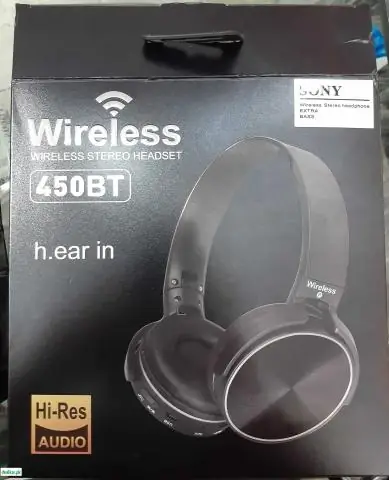
Table of contents:
- Lightness, grace, reliability: we learn to weave furniture from vines, rattan and other materials
- Features of wicker furniture
- Weaving materials
- Tools for work
- Weaving patterns and methods
- Making furniture from vine or rattan
- Wicker furniture finishing
- Vine and rattan care
- Reviews of self-weaving vine and rattan furniture
- Author Bailey Albertson [email protected].
- Public 2024-01-17 22:26.
- Last modified 2025-06-01 07:32.
Lightness, grace, reliability: we learn to weave furniture from vines, rattan and other materials

Fashion for light and beautiful pieces of furniture made of vine or rattan is experiencing a new upsurge. Surely you want to diversify your interior with something special. Do-it-yourself wicker chairs, tables or chairs are what you need.
Content
-
1 Features of wicker furniture
- 1.1 Types of wicker furniture
- 1.2 Vine or rattan furniture - photo gallery
- 1.3 Video: wicker wicker and rattan furniture in the interior
-
2 Materials for weaving
- 2.1 Frame materials
- 2.2 How to choose the right material
- 3 Tools for work
-
4 Patterns and methods of weaving
- 4.1 Weaving patterns - table
- 4.2 Weaving methods - photo gallery
-
5 Making furniture from vine or rattan
-
5.1 Simple braiding of the frame with artificial rattan
- 5.1.1 Simple rattan braided furniture - photo gallery
- 5.1.2 Braiding the worktop frame - video
-
5.2 How to weave a rocking chair from a vine
5.2.1 How to make a rocking chair from a vine - video
- 5.3 Vine braiding of the chair frame
-
5.4 Simple garden sofa
5.4.1 How to weave a chair from a willow vine - video
-
- 6 Finishing wicker furniture
- 7 Care of products made of vines and rattan
- 8 Reviews of self-weaving vine and rattan furniture
Features of wicker furniture
The history of wicker furniture goes back thousands of years. Archaeologists often find it all over the world. Weaving from vines and other natural materials of plant origin was widespread in settlements located near water bodies. The proximity of suitable raw materials in large quantities contributed to the fact that most of the products used in everyday life were made by people on their own.
Wicker furniture was used more often in the homes of the poor, as the cheapest and most affordable option. But rather quickly wealthy people and representatives of the nobility appreciated its beauty, functionality and the possibility of using it in the interior. Since then, not only single craftsmen have been engaged in weaving, but also whole artels, and later - factories. There are even special schools of weaving from the vine.
Prince Golitsyn brought the fashion for wicker furniture to Russia. Often traveling abroad, he appreciated the properties of vine products and created a whole workshop for their production on his estate.

Wicker furniture can be a real work of art
Now wicker furniture is very popular. Making it becomes a favorite hobby for many, even generating income. In addition, it has many advantages. These include:
- low cost, especially in comparison with products made from other natural materials;
- light weight, thanks to which you can easily move furniture anywhere without assistance;
- environmental friendliness: wicker interior items not only look beautiful, but are also safe for health, do not have a specific smell;
- easy maintenance: most often it is enough to wipe the dust off the furniture with a cloth soaked in water;
- durability, subject to high-quality weaving, made in accordance with all the rules.
True, there are also disadvantages that must be taken into account. Furniture woven from vines and similar materials is not resistant to the vagaries of the weather. Under heavy rain, it gets wet, and with prolonged exposure to sunlight and high temperatures, it can dry out. This leads to loss of shape and disruption of weaving. It is very difficult to repair a damaged product. Therefore, it is not recommended to keep such furniture in an open area for a long time.

Nowadays, wicker furniture is very popular, and many are starting to make it professionally.
Types of wicker furniture
According to the structure and manufacturing principle, wicker furniture is divided into several types:
- Frameless products. In them, the rigidity of the structure is provided by strong stick-ribs.
- Frame furniture in which the body is made of a durable material, such as steel rods. The metal parts of the frame are braided with vines or other appropriate material.
- Wooden furniture, in which the supporting frame is made of wood sticks that impart rigidity and resistance.
Vine or rattan furniture - photo gallery
-

Wicker chairs and garden table -
A summer garden cannot be imagined without comfortable wicker furniture
-

Rocking chair with a blanket - A rocking chair is the dream of anyone who loves comfort
-

Sleeping set of vine - Even a bed and a whole bedroom set can be woven from vine or rattan
-

Deep wicker chair - Cozy basket chair with a low base will appeal to kids and pets
-

Hanging rattan chair - A comfortable hanging rattan chair is good to rest after a hard day
-

Vine dining set - An airy openwork set of a sofa, armchairs and a table will adorn any dining room
Video: wicker wicker and rattan furniture in the interior
Weaving materials
In the manufacture of wicker furniture, several types of materials are used. Each of them has its own characteristics:
-
Willow vine is a rather flexible and resilient material, but short-lived. Traditionally, willow, broom, almond or goat willow (willow) are used. Some varieties are used for coarse weaving, others for finer work.

Willow vine Willow vine is the most common material for weaving
-
Rattan is a flexible and durable material from which interior items are most often woven. This liana-like plant is found in Asia and the Pacific Islands. Due to its high resistance to moisture and wear, furniture made of it is ordered for baths and saunas. There is also artificial rattan - a synthetic material that is a polyurethane tape. It is more pliable and easier to handle than natural vine or rattan, and it costs much less, therefore it is absolutely universal for weaving furniture.

Rattan rods Artificial rattan is very durable and flexible, it is practically not afraid of moisture
-
Banana leaves (abaca), 75-350 cm long, were used to make ropes and ropes. Over time, their strength and lightness were appreciated, and the material began to be used for weaving furniture.

Abacus armchair Banana leaves are often used in furniture weaving.
-
Bamboo, due to its rigidity, is not very common as a material for making furniture: it is difficult to weave. More often you can find decorative items created from bamboo shavings.

Bamboo blanks Bamboo is very tough and difficult to weave
-
Water hyacinth is used for its resistance to moisture and sunlight. But the technology for preparing the material is very time consuming: it needs to be collected, dried, compressed and rolled into rolls. The process will take six months, so for beginners it is better to pay attention to something simpler, for example, artificial rattan.

Water hyacinth products Products made from water hyacinth are not afraid of moisture and sunlight
- Seaweed. Furniture made of this material is not very durable, but it looks impressive. Most often, dried algae in the form of ribbons is used to braid the frame of furniture.
For weaving, you can take what is at hand - bird cherry, hazel, raspberry, alder, or even nettle. The bird cherry vine is more malleable in work: it is plastic, flexible and easily cleared of leaves and shoots.
Frame materials
For the manufacture of a stable structure that will last a long time, we recommend using ready-made frames of furniture items - a chair, sofa, table, armchair. They can be metal, wood, polyurethane foam. The principle of operation will be to braid the base, and you will have several advantages:
- saving the main material;
- simplification and acceleration of the weaving process;
- additional strength of the product;
- increase in the service life of furniture.
How to choose the right material
Before harvesting materials for weaving, check out the recommendations from the professionals of this craft:
- Before cutting the willow twig, bend it strongly or even wrap it around your finger. Only those rods that do not break with such manipulations are suitable for cutting. They must be smooth, clean and free of any defects.
- Choose the longest rods without branching. The most suitable shoots are those that grow directly from the ground or from the branch located below all. As a rule, these are young annual shoots without twigs and lateral branches, in the place of which creases can form.
- Take a closer look at the core on the cut: ideally, its diameter should be less than 1/3 of the diameter of the entire cut. If the core is thick, red or brown, discard the rod.
- Make the cut at an angle with a sharp motion. Use a very sharp knife.
- For the frame, choose thick rods that were harvested in late autumn or winter. Make decorating elements from branches collected in spring during sap flow.
- Good taper is very important for shoots, that is, the ratio of the diameters of the branch at the base and at the tip along the entire length. Thinning of the branch by 1 mm after 20 cm is considered the norm.
You can prepare the rods yourself. If you don't have enough skills, time or desire, then purchase ready-made materials in specialized stores. You can use rods with bark (green) or without it (white). It is easier for beginners to work with the former: they are more flexible. Peeled branches can be given any shade or color using chemical agents:
- hydrogen peroxide for a snow-white color;
- manganese solution - brown;
- iron vitriol - grayish;
- aniline dyes for coloring in any selected shade.

The rods peeled from the bark turn white
Tools for work
Weaving from a vine is a time consuming occupation that requires scrupulousness. Only hands are not enough here. We'll have to stock up on a whole set of tools:
- special knives and garden shears for cutting and trimming twigs;
- ladder for sorting raw materials;
- large capacity, a tank for soaking a rod;
- boiler for cooking and bleaching blanks;
- jaws for cleaning rods from bark;
- splitters for dividing rods into parts;
- a chauffeur for receiving planed ribbons;
- sniffing for curly processing, excavation;
- izer for aligning rows;
- jams for straightening frame blanks;
- secateurs;
- measuring accessories - ruler or tape measure;
- pliers;
- saw on wood.
Weaving patterns and methods
There are several ways to weave furniture and interior items. Each one combines decorativeness and functionality.
Weaving patterns - table
| Weaving name | Features: | |
| Solid thick | Simple |
|
| Rope |
|
|
| Checkers |
|
|
| Openwork | Diamond-shaped | The weaving is complex, creating geometric shapes and patterns with open cells. |
| In the form of columns | ||
| Chess | ||
| Outlet | ||
| Ring | ||
| Spiral | ||
| Pigtail | The method is used for weaving decorative elements and in the design of the edge. | |
| Bending | This type of weaving is used to shape the edges of the product. | |
Weaving methods - photo gallery
-

Simple weaving - The simple weaving pattern is easy for beginners
-

Braiding Pigtail - Pigtail often braids the edges of the product
-

Rope weaving - Rope weaving is created from two or more twigs
-

Openwork weaving - Openwork weaving will give the product lightness, airiness and transparency
-

Checkerboard weaving - Using checkerboard weaving, you will decorate furniture with a voluminous pattern
Making furniture from vine or rattan
To begin with, the vine must be properly processed to give it the necessary flexibility and strength. This process will be needed, no matter what product you choose for weaving:
-
Place the harvested vine in a large container of boiling water. In a moderately boiling water, hold the material for at least an hour. Then remove the bark.

Remove the bark from a steamed rod Prepared vines need to be barked
-
Fix the thick rods used for the frame base in special devices to give them the desired shape. For example, a rocking chair will need rounded runners. To achieve this look, lay the wet thick rod along the round object and secure.

Shaping the rods Thick rods are given the shape necessary for making the frame of the selected product
-
Split thin vines with a splitter into 3-4 parts. This is easy to do: make an incision at one end of the rod with a sharp knife, insert a splitter there and hit the back with a hammer. The sharp end of the tool will run along the entire length of the vine.

Two cleavers Thin vines are split into pieces with a splitter
-
The resulting parts of the rod are called shanks. Pass them through a press to make them look like braiding ribbons. You can also use a dedicated vine planer.

Device for planing strips from willow vines To get tapes for braiding, use a special device or a press for wood
-
Place the thick rods in the fixed form and the tapes in the drying chamber, leaving there for three days. There they will dry and take the given shape.

Wooden elements in the dryer The prepared parts of the future chair need to be dried
Simple braiding of the frame with artificial rattan
It will not be easy for a beginner to immediately and without errors weave something serious from natural materials. We suggest starting the training with simple things - stools, coffee table tops, ottoman covers - and use artificial rattan. A simple rectangular shape is braided like this:
-
First of all, make a frame of sturdy boards. It consists of 4 legs and a frame. You don't have to bother with the treatment of its surface: the weaving will cover the entire product completely.

Stool frame The frame of the future product is made of boards
-
On the top of the product (seat on a stool, table top or ottoman cover), make reinforcement harnesses. You can make them from rattan by braiding or twisting, or use a thick tape with minimal tension. Secure the harnesses with a stapler and fix on the self-tapping screws with a bar for strength.

Reinforcement harnesses on the stool seat Strengthening harnesses are pulled over the seat of a chair or ottoman
-
Now start braiding. It is better to use a tight checkerboard weave. Lay the rattan tape in one direction, alternating 2 short lengths with one long one. In this case, fix the short ones with a stapler on the seat, and the long ones on the crossbar.

Rattan ribbons on the frame Rattan ribbons are laid and fixed on the frame in the required sequence
-
After laying the first layer of artificial rattan, begin to weave the ribbon into it. Alternate 1 long and 2 short segments. Use ribbons of different colors for convenience. Each next tape is woven with a shift of 1 tape to the left. Be careful, it's easy to get confused at this stage.

Braiding the seat of the stool Rattan is woven into the base, choosing a simple pattern
-
Secure the remaining ponytails and trim off any excess tape. The seat is ready.

Braided seat At the end of the work, fix the remaining tails and remove excess tape
-
Now let's move on to the sides. Take one long piece of tape and braid the sides around the sides. The length of the tape is difficult to guess, so if it runs out in the middle of a job, attach another piece to it with a soldering iron. The beginning of the tape can be attached at any corner under the vertical strip.

Braiding the sides of the chair The sides are braided in a circle with one long ribbon
-
Braid the garment to the very bottom in a circle. When done, gently fold the remaining ponytails into the product and cut off the excess.

Rattan braided stool You can braid not only the seat, but also the sides and legs of the chair
-
You do not need to braid the sidewalls to the very bottom, but leave the legs. Braid them separately according to the same pattern. Add rattan strips to the legs in a vertical direction, slipping it under the braiding of the sidewall and securing it with a stapler. Braid the leg in a circle.

Braiding the legs of the stool The legs are braided in the same way as the sides or seat of the chair
-
The chair is ready.

Cat on a wicker chair Every pet will be happy with such a versatile piece of furniture.
The described instruction is universal: without legs, it can be used to make an ottoman, and if you increase the width of the frame, you get a comfortable coffee table.
Simple rattan braided furniture - photo gallery
-

Rattan lounger - It's easy to make a sun lounger from artificial rattan
-

Artificial rattan chair - Even a beginner can braid a chair with a backrest with rattan
-

Table with rattan shelf - A good option for country furniture is a low table with rattan braid
-

Rattan laundry box - Artificial rattan can be used to make a laundry box
Weaving the frame of the countertop - video
How to weave a rocking chair from a vine
You can weave a rocking chair from a vine. The chair may look like a regular chair. It can also be equipped with armrests. First, the frame is assembled, fixing the parts with nails or screws.

You can weave a rocking chair from a vine
Then they braid it with flexible rods using glue for a more reliable attachment. When the main part is done, rounded runners are attached. Make sure the structure is stable: rock the chair and check that it moves easily and does not tip over. The finished product is covered with furniture varnish or painted.
How to make a rocking chair from a vine - video
Vine braiding chair frame
The frame can be bought ready-made or made from sticks 15-20 mm thick. Due to weaving, the frame will not only take on a beautiful appearance, but will also be significantly strengthened. Chair manufacturing steps:
- Fix the racks on the frame from rods 15-20 mm thick.
- In place of the seat, make a continuous weave from thick rods with a diameter of 10 mm.
- Braid the back using a solid or openwork pattern.
- Remove the excess and the ends of the twigs, clean the chair and paint it.

You can buy a chair frame in a store or make one yourself
Simple garden sofa
A light openwork sofa made of vine will decorate your veranda or garden.
The wicker sofa, in comparison with the carpentry, has two additional middle legs. They are attached to the frame of the structure between the side front and rear legs in order to protect the furniture from bending and breaking the elements of the seat frame.
For the frame, you will need sticks 20-30 mm thick of different lengths:
- 100 cm and 45 cm, 2 pcs. - for the seat frame;
- 40 cm - 3 pieces (front legs);
- 65 cm - 2 pieces (rear side legs);
- 75 cm - 1 pc. (back middle leg);
- from 125 cm - 1 pc. (for the upper arcuate part of the back).
To give additional strength and stability to the frame, ribs are attached between the legs at a distance of about 20 cm from the seat. To do this, you will need 3 sticks of 45 cm each and 2 sticks of 100 cm each. All elements are fastened with self-tapping screws.
Operating procedure:
- Make a seat frame: connect two sticks 100 cm long and two 45 cm long into a rectangle.
- Our sofa will have 3 front legs 40 cm high. Fasten them equally under the seat.
- Now the hind legs. Their length is calculated taking into account the height of the back, so they are longer than the front ones. Attach them at the same distance from each other as the front ones.
- We attach the longest stick to the upper ends of all hind legs. Due to the fact that the middle leg is longer, we get the back of the sofa in the form of an arc.
-
Strengthen the frame structure: fix 1 crossbar (45 cm) between the three pairs of front and rear legs in a horizontal position. 2 more sticks 100 cm long, fasten along the length of the seat in front and behind at the same level as the short crossbars. They can also be attached to short crossbars at a distance of 10-15 cm from the front and rear legs, approximately as in the photo below.

Vine Chair and Sofa The frame is stiffened by the crossbars fixed between the legs
- Take willow ribbons and braid the frame with them, lubricating the surfaces with glue so that the vine holds better.
- The seat can be a piece of plywood of a suitable size, nailed down. This is the easiest option.
- Paint the finished sofa with wood stain.
- After drying, place a soft mattress on the seat.
How to weave an armchair from a willow vine - video
Wicker furniture finishing
When a chair, table, sofa or other item is ready, the only thing left to do is to give the item a presentation. Finishing work is carried out in several stages:
- Inspection for various defects, elimination of them: they correct the uneven density of weaving by slightly moving the rods, level the legs, cut off the ends of the rods and smooth out the irregularities with fine-grained sandpaper.
- Whitening and painting. To make the product white, treat it with lime or sulfur dioxide. To give a different color, use ordinary paint. They also use decoctions of onion peels, wolf berries, heather, alder bark or lyre, if you like naturalness and environmental friendliness.
- Coating with varnish. In order not only to preserve the texture of the material used, but also to make it even stronger, apply 2-3 layers of varnish (each subsequent one after the previous one has completely dried).
Vine and rattan care
Wicker furniture needs special care, due to the characteristics of the material used: vine and rattan can become very fragile if used improperly.
- Use a damp cloth to dust the garments at least once a week.
- If a large amount of water gets on the wicker furniture, first wipe it thoroughly with a dry cloth, then take it out to the air to dry it naturally. Do it immediately.
- Only vacuum the wicker using the soft attachments.
- If you notice that the braid has begun to dry, sprinkle it with linseed oil from a spray bottle.
-
To protect wicker furniture from moisture, treat it with tung oil or products based on it twice a year. Do this at the beginning of the season (before taking your furniture outside) and at the end.

Man handles wicker furniture To protect wicker furniture from high humidity, treat it with tung oil-based products
Wicker furniture is a rather difficult product to repair. In the event of a breakdown, it is difficult to find a master who will take on the fix. Therefore, proper care is essential and essential for vine and rattan products.
Reviews of self-weaving vine and rattan furniture
Vine weavers use both peeled willow twigs and unpeeled. Fences and other objects intended for long-term outdoor use are weaved from uncleaned rods. Peeled rods, over time, acquire a warm yellow-orange color. Things made from such rods look more presentable and elegant. Sometimes wide rods are split with special splitters into 3 or 4 parts, getting the so-called "tires". The tires are later made into a thin tape by cutting off the core from it. These ribbons are used by experienced craftsmen to weave furniture and other products.
Ilona
https://greenforum.com.ua/archive/index.php/t-2184.html
Any fine work at first seems difficult, but over time the hands get used to it, the eyes become more attentive, and the head finds new original solutions. It's the same with wicker furniture. Do not be afraid of difficulties, start with simple objects, and soon you will be able to decorate your home with real works of art.
Recommended:
How To Remove Hair Dye From Clothes, Remove It From Furniture And Other Items + Photos And Videos

How to chemically remove hair dye stains from fabrics, leather goods, carpets, hard surfaces, and wallpaper
How To Wipe Off The Glue From The Adhesive Tape - Remove Traces Of Ordinary, Double-sided, Painting From Plastic, Furniture, Glass, Clothes And Other Surfaces + Photos And Videos

Everyone uses scotch tape, and sometimes unpleasant traces remain after it. How to wipe off adhesive from plain or double-sided plastic, furniture, glass or clothing
How And What To Wash The Blood From The Sofa, Mattress, Upholstered Furniture And Other Items In The Apartment + Photos And Videos

Blood stains can ruin various types of surfaces. We will tell you how to remove them from furniture, wallpaper, ceiling, as well as how to wash them off shoes with improvised means
How To Make A Birdhouse Out Of Wood With Your Own Hands: Options With Drawings And Diagrams + Photos And Videos

How to make a wooden birdhouse with your own hands. The right tree, the necessary materials and tools, drawings, step-by-step manufacturing instructions. Video
How To Wean A Cat And A Cat To Tear Wallpaper And Furniture, Features Of Weaning Kittens And Adult Animals, Useful Tips And Tricks, Reviews

Why does a cat tear wallpaper and furniture? How to prevent damage to property. What to do if you can't wean your cat
